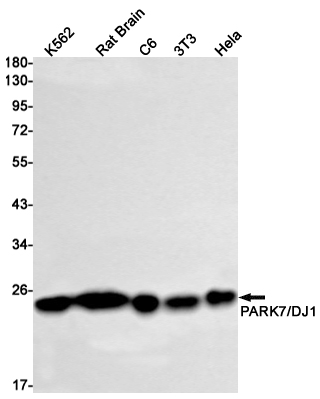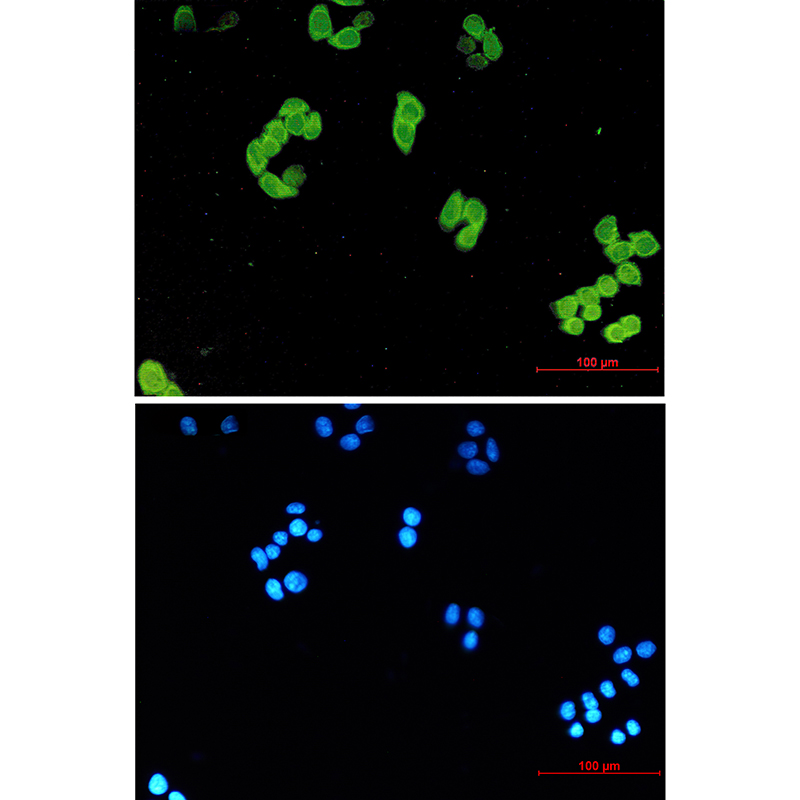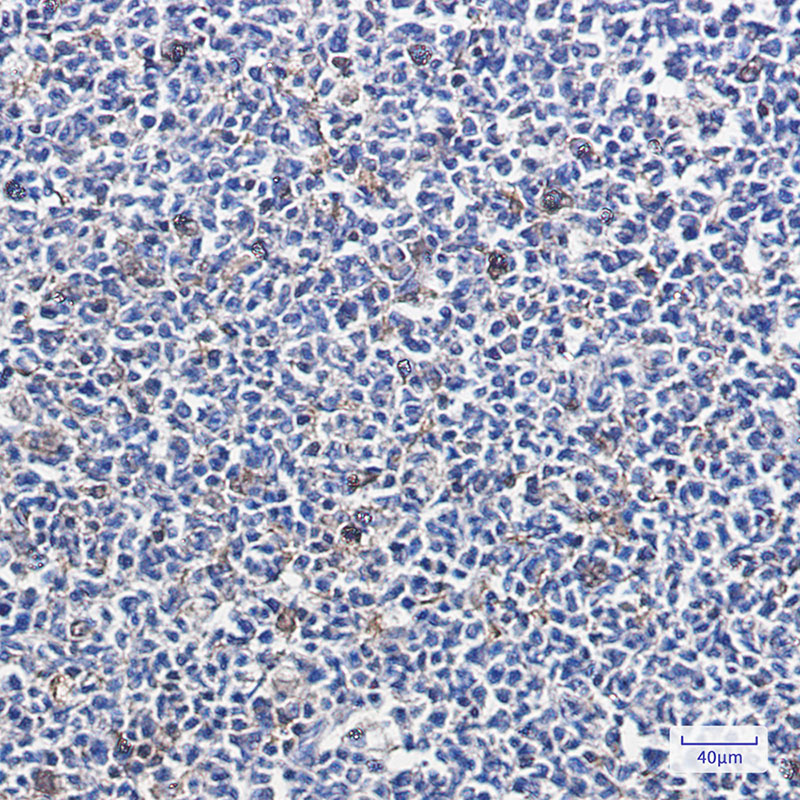


| WB | 咨询技术 | Human,Mouse,Rat |
| IF | 1/20 | Human,Mouse,Rat |
| IHC | 1/50-1/100 | Human,Mouse,Rat |
| ICC | 1/50-1/200 | Human,Mouse,Rat |
| FCM | 咨询技术 | Human,Mouse,Rat |
| Elisa | 咨询技术 | Human,Mouse,Rat |
| Aliases | PARK7; Protein DJ-1; Oncogene DJ1; Parkinson disease protein 7 |
| Entrez GeneID | 11315 |
| WB Predicted band size | Calculated MW: 20 kDa; Observed MW: 20 kDa |
| Host/Isotype | Rabbit IgG |
| Antibody Type | Primary antibody |
| Storage | Store at 4°C short term. Aliquot and store at -20°C long term. Avoid freeze/thaw cycles. |
| Species Reactivity | Human,Mouse,Rat |
| Immunogen | A synthetic peptide of human PARK7/DJ1 |
| Formulation | Purified antibody in TBS with 0.05% sodium azide,0.05%BSA and 50% glycerol. |
+ +
以下是3-4篇关于 **PARK7/DJ-1抗体** 的参考文献及其摘要概括:
---
1. **文献名称**:*Mutations in the DJ-1 gene associated with autosomal recessive early-onset parkinsonism*
**作者**:Bonifati, V., et al. (2003)
**摘要**:该研究首次发现 **PARK7/DJ-1基因突变** 与常染色体隐性早发性帕金森病相关。通过免疫印迹和免疫组化实验,使用DJ-1抗体检测患者脑组织中DJ-1蛋白表达缺失,表明其功能丧失可能导致氧化应激反应异常,从而引发神经退行性病变。
---
2. **文献名称**:*The Parkinson's disease protein DJ-1 is neuroprotective due to cysteine-sulfinic acid-driven mitochondrial localization*
**作者**:Canet-Avilés, R. M., et al. (2004)
**摘要**:研究揭示DJ-1通过半胱氨酸酸化修饰定位于线粒体,在氧化应激中发挥神经保护作用。利用DJ-1抗体进行亚细胞定位分析,发现突变型DJ-1无法有效转位至线粒体,导致细胞抗氧化能力下降,为帕金森病机制提供了新见解。
---
3. **文献名称**:*DJ-1. a novel oncogene, regulates cell proliferation and apoptosis via the PI3K/AKT pathway in breast cancer*
**作者**:Kim, R. H., et al. (2005)
**摘要**:本文发现DJ-1在乳腺癌中高表达,并通过PI3K/AKT通路促进肿瘤增殖和抑制凋亡。通过免疫组化(使用DJ-1抗体)和基因敲除实验,证实DJ-1的致癌性,提示其可作为癌症治疗的潜在靶点。
---
4. **文献名称**:*Reduced expression of PARK7 impairs mitochondrial function and increases oxidative stress in Alzheimer's disease*
**作者**:Xu, J., et al. (2017)
**摘要**:研究探讨了PARK7/DJ-1在阿尔茨海默病中的作用,发现患者脑组织中DJ-1蛋白水平降低(通过ELISA和Western blot检测)。抗体实验表明,DJ-1缺失导致线粒体功能障碍和活性氧积累,可能加剧神经元退变。
---
以上研究均依赖 **DJ-1特异性抗体** 进行蛋白表达分析,涵盖神经退行性疾病和癌症等领域。
The PARK7 gene, also known as DJ-1. encodes a highly conserved protein implicated in cellular protection against oxidative stress, mitochondrial regulation, and chaperone-like activities. First linked to early-onset autosomal recessive Parkinson’s disease (PD) in 2003. DJ-1 mutations cause loss of function, leading to neurodegeneration. The DJ-1 protein is ubiquitously expressed and localizes to the cytoplasm, mitochondria, and nucleus, playing roles in redox sensing, transcriptional modulation, and protease activity. Its antioxidant function involves scavenging reactive oxygen species (ROS) and stabilizing the antioxidant master regulator Nrf2.
PARK7/DJ-1 antibodies are essential tools for studying the protein's expression, localization, and interactions in both physiological and pathological contexts. These antibodies are widely used in techniques like Western blotting, immunohistochemistry, and immunofluorescence to assess DJ-1 levels in PD models, cancer studies (where DJ-1 is often overexpressed), and other oxidative stress-related disorders. Researchers also utilize them to explore DJ-1's involvement in mitochondrial dysfunction, neuroinflammation, and apoptosis.
Commercially available antibodies target specific epitopes, with validation across species (human, mouse, rat). However, variability in specificity and batch consistency requires careful validation. DJ-1 antibodies have advanced understanding of PD mechanisms, highlighting its role as a redox-sensitive chaperone and potential biomarker. Ongoing research focuses on DJ-1's therapeutic potential, including small-molecule activators and gene therapy approaches to restore its neuroprotective functions in neurodegenerative diseases.
×